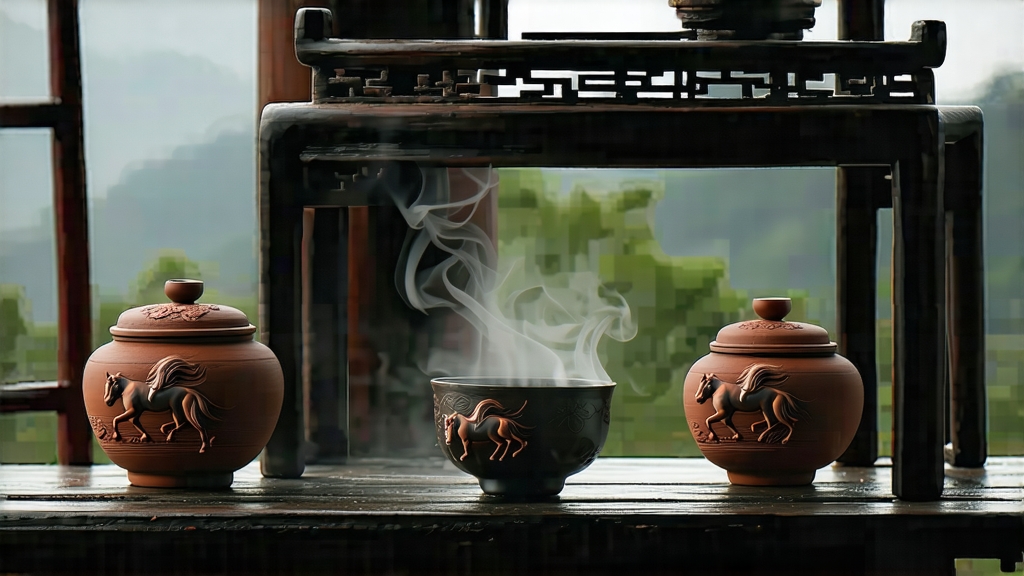
Tucked into the creased limestone hills of Guangxi Province, Liu Bao Cha—literally “Six Forts Tea”—has spent four centuries quietly fermenting while its more famous cousins, Pu-erh and Fu Brick, soaked up the limelight. To the international palate, Liu Bao is still a whisper, yet inside China it is the dark, glossy engine that once lubricated the Tea Horse Road and still fuels the morning rituals of dock workers in Guangzhou and grandmothers in Kuala Lumpur. This article invites you to descend into the humid caves of Wuzhou, where the tea’s microbial orchestra plays for years, and to emerge with a clear, practical map for brewing, tasting, and appreciating a tea whose flavour begins in camphor forests and ends in cocoa-butter nostalgia.
-
From Ming Militias to Maritime Silk Road
The name “Liu Bao” refers to six stone fortresses built during the Ming dynasty to defend against hill-tribe uprisings. By the late 1600s, soldiers paid in pressed tea discovered that the rough leaves, wrapped in bamboo and strapped to mule saddles, mellowed during the muggy journey to Guangzhou’s foreign warehouses. Dutch and Southeast Asian traders loved the deep, sweet liquor; soon Liu Bao became a commodity currency, swapped for spices, medicines, even opium. In 1886, the port of Wuzhou exported more than 1,000 tonnes, most of it destined for tin mines in Malaya where coolies believed the tea prevented beriberi. The opening of the Yunnan–Vietnam railway in 1903 rerouted Pu-erh, and Liu Bao slipped into obscurity—until a new generation of Cantonese tea merchants revived the craft in the 1990s, building spotless fermentation workshops inside the same limestone caves that once stored gunpowder. -
Leaf Hierarchy: Green, Old, and Everything Between
Unlike Pu-erh’s sheng/shāng dichotomy, Liu Bao is always post-fermented, but the degree and style vary.
• San Cha (“loose tea”) – lightly wet-piled for 30–40 days, then sun-dried; retains a mossy brightness, ideal for newcomers.
• Jiàn Chá (“basket tea”) – steamed, packed into 30–50 kg rattan baskets, and cave-aged; the bamboo imparts a faint green coconut note.
• Lǎo Chá Bǐng (“old tea brick”) – pressed in 1 kg or 250 g bricks, heavily fermented 60–90 days, then cellared 5–30 years; delivers camphor, dark honey, and the prized “betel-nose” aroma reminiscent of aged areca nut.
• Jīn Huā (“golden flower”) – a rare sub-style inoculated with Eurotium cristatum during piling, yielding tiny yellow spores and a mellow apricot sweetness. -
The Wet-Pile Alchemy
Liu Bao’s soul is the “wò duī” (wet pile), yet Guangxi’s subtropical climate adds twists unseen in Yunnan. After plucking one bud and three to four leaves in late April, the tea is briefly withered, wok-killed at 180 °C for eight minutes to arrest oxidation, then rolled until the leaf surface glistens. The magic begins when 85 % relative humidity meets 55 °C inside a concrete pit lined with rice-straw mats. Workers sprinkle mountain spring water, turn the pile every three days, and monitor core temperature with bamboo thermometers. Over six to eight weeks, Aspergillus niger, Blastobotrys adeninivorans, and local Wallemia species bloom, converting catechins into theabrownins and releasing a cellar-like bouquet. Finally, the tea is sun-dried on bamboo trays, then moved into limestone caves where constant 22 °C and 80 % humidity allow slow, secondary fermentation for years—nature’s own terracotta amphora. -
Reading the Leaf: A Taster’s Lexicon
Visual: good Liu Bao is striated mahogany and tar-black, with coppery buds that catch the light like burnt sugar. Aged examples show a frost of golden spores, not to be confused with mold.
Aroma: dry leaf gives dried longan, camphor wood, and a whisper of tobacco; after the first rinse, the gaiwan lid exudes warm leather and rain-soaked earth